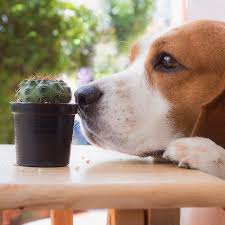Love succulents and animals? Good news: The succulents included here are completely harmless to your pets! These types are safe to keep around animals, even if a curious critter ingests them. Please note: toxicity research is an ongoing process and we are committed to keeping this list as up to date as possible. If you are concerned a pet has consumed a toxic plant, contact Animal Poison Control.
Creating a space that’s safe for both your pet and succulents can be easy. Luckily, most succulents are completely harmless to animals. Additionally, most animals instinctively avoid eating succulents. They just don’t smell or taste very appetizing.
Below are our five favorite types that pose absolutely no risk to our furry friends & further down is a list that can cause harm.
ECHEVERIA: is a family of rose-shaped succulents native to the semi-desert regions of Central America. Because of its charming leaves’ structure,
Echeverias are one of the most well-known succulents. There are plenty of types with different gorgeous colors when it comes to Echeverias.
HARDY SEDUM: are trailing varieties are lovely as ground covers and in rock gardens, terraces and hanging baskets.
HAWORTHIA: is a delightful little succulent that makes a very attractive small houseplant. These small, low growing plants form rosettes of fleshy green leaves that are generously covered with white, pearly warts or bands, giving them a distinctive appearance.
SEMPERVIVUM (HENS & CHICKS) They are commonly called houseleeks and grow well indoors and out, in cool or hot temperatures. Hens and chicks plants are so called because of the rosette shape and habit of the plant to produce numerous babies. A rockery or dry, nutrient challenged location is a good place for growing.
SUCCULENTS THAT ARE NOT PET-FRIENDLY
ALOE VERA: The gel of the Aloe is fine to apply on both human and animal skin but should never be ingested. Aloin, one of the toxic chemicals in these plants, is a bitter, yellow liquid. It’s found just beneath the outer skin of the leaves.
Symptoms: Lethargy, vomiting, diarrhea, red urine
Sources: ASPCA, UC Davis Veterinary Medicine
EUPHORBIA: known as “Milk Plants” because of the white latex sap in their stems. Unfortunately, this sap can be irritating to skin and toxic if ingested.
Symptoms: Mouth irritation, stomach pain, vomiting, diarrhea
Sources: ASPCA, Pet Poison Helpline
JADE (CRASSULA): are rubbery plants that are famously hard to kill. Unfortunately, Jade leaves can be irritating to cats and dogs if consumed.
Symptoms: Lethargy, clumsy movements, dry-heaving, vomiting
Source: ASPCA
KALANCHOE: are prolific succulents and a good choice for new plant enthusiasts. They should, however, be out of reach of dogs, cats, and birds. If ingested, Kalanchoe can irritate your pet’s mouth or cause moderate digestive distress. It can take anywhere from 12 hours to five days for symptoms to show.
Symptoms: Oral irritation, drooling, vomiting, diarrhea
Source: ASPCA
Use Caution with All These Varieties:
Adenium
Agave
Albuca
Aloe
Cactus
Cotyledon
Crassula (Jade)
Euphorbia
Kalanchoe
Ledebouria
Pachypodium
Sansevieria

